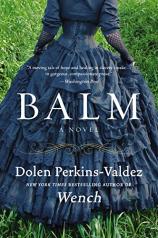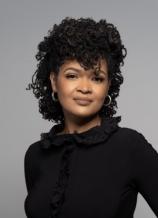Reading Group Guide
Discussion Questions
Balm

1. Sadie’s work, “keeping alive the spirits of the lost,” is “in perfect order” with the city of Chicago. Why might this be so? What else does Chicago at this time in history bring to the novel?
2. Consider Sadie’s work as a medium and the extensive “companionship” she has with books of every subject. In what ways are these kindred activities or not?
3. When Madge begins working for Sadie she wonders about having gone from total independence or being “free free,” back to “slightly free.” What does she mean? How much freedom is healthy or necessary in one’s life? What forms can it take?
4. After her mother dies saving someone else’s life, Sadie wonders “Which was the greater need, one’s own or another’s?” How does one balance concern for others and care for the self?
5. Part of Madge’s healing work is to listen to “the joy of complaint,” when her patients are “in that moment, fully alive.” Why is the telling such an important part of the experience of illness?
6. Madge’s profound ability is steeped in the natural world, “the holiness of everything” brought forth on the earth, while Sadie works with and trusts the supernatural. What’s the relationship between the two realms and the work the women do in them?
7. Reading is an important ability throughout the novel that seems to the illiterate like a magical power. In what ways might this be so? Why was literacy so important at this particular time?
8. Hemp believes that “even a bad family a good one.” What does he mean? In what ways has slavery influenced his view on family?
9. Why does Hemp find it so difficult to accept his newfound love for Madge? How has the loss of his family affected his ability to find other kinds of happiness in his new life?
10. Consider the various creative talents in the novel: Hemp’s carving of wood, Sadie’s embroidery, Michael’s singing. What’s the value of such creative ability?
11. After secretly carving a chair for the man who would marry him to Annie, Hemp thinks, “By God, this chair got the power to love me.” What might he mean? How does art affect us?
12. In what ways, healthy and not, are we connected to or influenced by the past? What should be the role of memory in one’s life?
13. When and why do different characters --- Sadie, Madge, Hemp --- decide to move on from painful, defining experiences and relationships from the past?
14. Michael, full of grief for his brother, “cursed the rapid changes in the city, the incessant building and rebuilding.” What are the contradictions between the casualties of war and capitalistic opportunities?
15. Revisiting her aunts, Madge tells them that, “people need miracles.” What might this mean?
16. Despite their past neglect and mistreatment of her, Madge returns to her mother and aunts. What draws her back to them? What then motivates her to leave a second time?
17. Madge claims that her home in western Tennessee has a “sanctity” that Chicago doesn’t. What is this quality? What’s necessary for a place to have it?
18. Hemp realizes that despite his freedom he is still sad. Why is this so?
19. At one point, standing happily with strangers, Sadie wonders if “family could be sketched out of such uncommon elements.” What does family mean? What qualities or elements are essential?
20. Madge eventually realizes that “the best healing balm was hope.” What does she mean? What is hope? How does it work? What role should it play in one’s life?
Balm
- Publication Date: February 2, 2016
- Genres: Fiction, Historical Fiction
- Paperback: 304 pages
- Publisher: Amistad
- ISBN-10: 0062318667
- ISBN-13: 9780062318664








